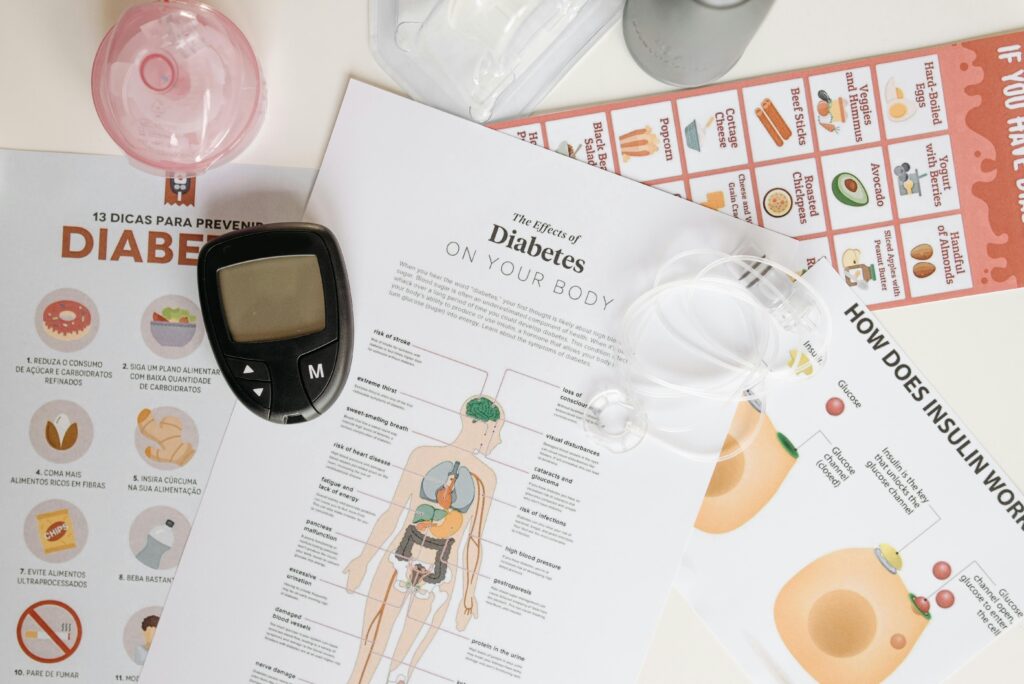As we age, our body changes in many ways—and so do the organs that keep us going. Among these, the liver plays a quiet but powerful role. It helps digest food, stores energy, filters out toxins, and balances sugar levels. That last part—balancing sugar—is where the liver and diabetes meet.
For older adults, the connection between liver health and diabetes is especially important. Many seniors manage diabetes or borderline blood sugar levels. At the same time, liver problems like fatty liver disease are becoming more common with age. These two health concerns are not separate. In fact, they are closely linked—and when both are present, they can make each other worse.
Let’s understand why this link is stronger in older adults and what can be done to protect both the liver and blood sugar levels.
How the Liver Helps Control Blood Sugar
The liver acts like a warehouse. After you eat, it stores extra sugar as glycogen. Between meals or during fasting, the liver sends that sugar back into the blood to keep your energy up.
In healthy people, this process is smooth and well-controlled. But when diabetes enters the picture, the balance gets disturbed. The liver may start releasing too much sugar, or may stop responding to insulin—the hormone that controls blood sugar.
This is called insulin resistance, and it’s one of the first steps toward type 2 diabetes.
Why Seniors Are More Affected
As people grow older, their liver becomes more sensitive to damage from things like fat build-up, medications, or long-term blood sugar issues. Older adults may also have:
- Slower metabolism
- Lower physical activity
- More belly fat
- Increased use of medicines that affect liver function
All these changes raise the risk of both diabetes and liver disease. And once both conditions exist, they can push each other further. Diabetes can make fatty liver worse, and an unhealthy liver can worsen diabetes control.
This is why the link is stronger—and more serious—in seniors.
What Is Fatty Liver, and Why Should Diabetics Worry?
Fatty liver disease happens when extra fat builds up in liver cells. It can be mild at first, but over time, it can lead to swelling (hepatitis), scarring (fibrosis), and even liver failure.
In people with diabetes, especially type 2, fatty liver is extremely common. In fact, studies show that more than half of people with type 2 diabetes may also have fatty liver disease.
This means that if you’re managing diabetes, you should also be paying attention to your liver. And if you’ve been told you have a fatty liver, it’s time to check your blood sugar, too.
Signs to Watch Out For
Unfortunately, both diabetes and early liver disease often show no symptoms. But there are some warning signs to look for, especially in older adults:
- Unexplained tiredness
- Dark patches on the neck or underarms (a sign of insulin resistance)
- Belly weight that’s hard to lose
- Enlarged liver seen in scans
- Elevated liver enzymes in blood tests
- Trouble controlling blood sugar, even with medicines
If any of these are present, it’s time to talk to your doctor.
Protecting Both Liver and Sugar Levels
Thankfully, some of the best steps for controlling diabetes are also great for liver health. Here’s what helps:
1. Eat Light, Eat Right
Choose whole grains, vegetables, dals, fruits, and healthy fats. Cut down on sugar, fried foods, and polished rice. Avoid sweets and sweetened drinks, even traditional ones.
2. Move Your Body
Even a 30-minute walk a day can help. Regular movement reduces insulin resistance and helps reduce liver fat.
3. Lose Belly Fat
Targeted weight loss—just 5 to 10% of your body weight—can make a big difference. Especially in reducing liver fat and improving blood sugar control.
4. Limit Alcohol
Alcohol can damage the liver and worsen blood sugar levels. Even occasional drinking should be done with care.
5. Check Medicines
Some common diabetes or blood pressure medicines can affect liver function. Regular blood tests will help track this. Always take medicines under a doctor’s guidance.
6. Don’t Ignore Regular Health Checks
Older adults should do regular blood tests to check:
- Liver function (LFT)
- Blood sugar (Fasting and HbA1c)
- Lipid profile (for cholesterol)
This helps catch problems early—before they become serious.
Role of Caregivers
If you’re caring for an older adult, help them stick to healthy food habits and regular checkups. Make sure they take medicines on time and don’t miss doctor visits. Keep an eye on signs like swelling, weight changes, or fatigue. These could be early signals that need attention.
The Big Picture
The liver and diabetes are part of the same story. They affect each other silently, especially in older adults. The good news is that with the right steps, you can protect both.
Simple food changes, daily activity, and regular checkups go a long way. And remember—health is not just about controlling sugar or cholesterol. It’s about keeping the whole body in balance, especially as we grow older.
Do you or a loved one have both diabetes and liver issues?
We’d love to hear your thoughts and experiences in the comments.
And if you found this blog helpful, please share it with your friends and family. It might help someone else take better care of their health.






